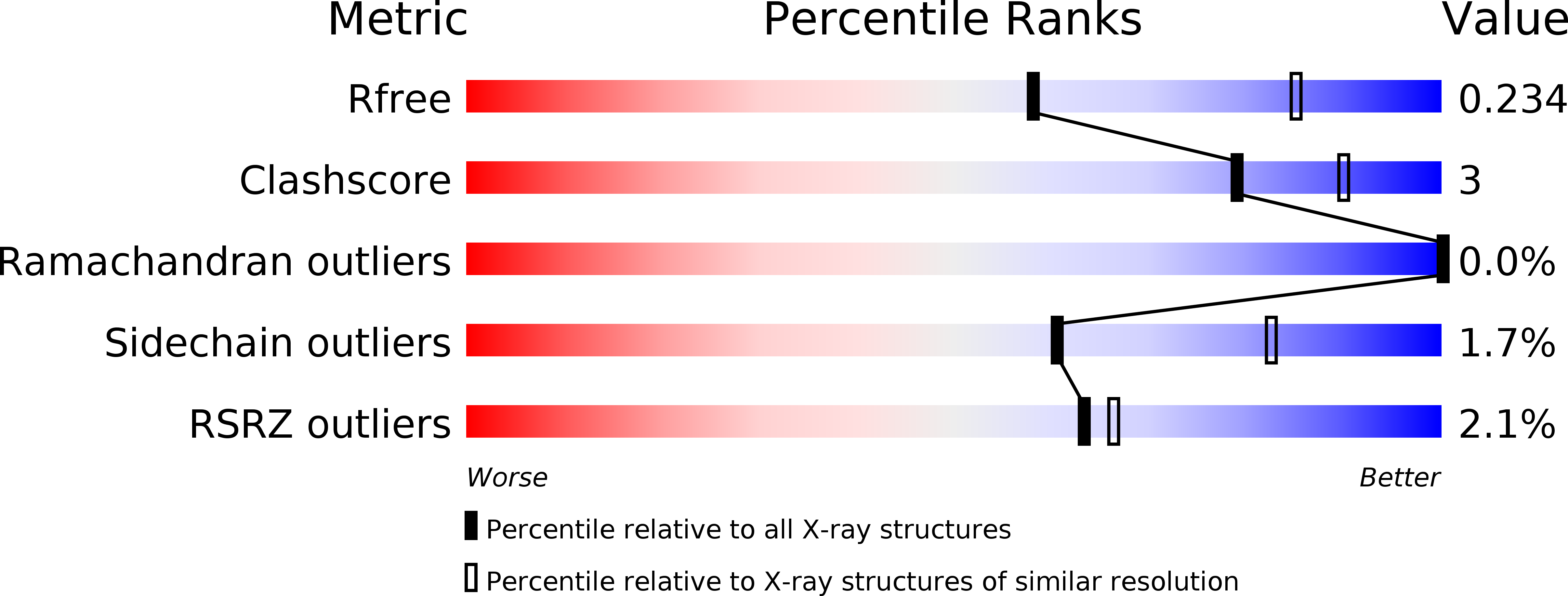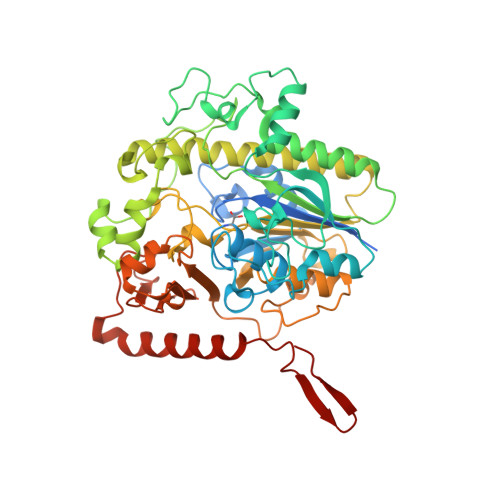Balancing Specificity and Promiscuity in Enzyme Evolution: Multidimensional Activity Transitions in the Alkaline Phosphatase Superfamily.
van Loo, B., Bayer, C.D., Fischer, G., Jonas, S., Valkov, E., Mohamed, M.F., Vorobieva, A., Dutruel, C., Hyvonen, M., Hollfelder, F.(2019) J Am Chem Soc 141: 370-387
- PubMed: 30497259
- DOI: https://doi.org/10.1021/jacs.8b10290
- Primary Citation of Related Structures:
4UPH, 4UPI, 4UPK, 4UPL - PubMed Abstract:
Highly proficient, promiscuous enzymes can be springboards for functional evolution, able to avoid loss of function during adaptation by their capacity to promote multiple reactions. We employ a systematic comparative study of structure, sequence, and substrate specificity to track the evolution of specificity and reactivity between promiscuous members of clades of the alkaline phosphatase (AP) superfamily. Construction of a phylogenetic tree of protein sequences maps out the likely transition zone between arylsulfatases (ASs) and phosphonate monoester hydrolases (PMHs). Kinetic analysis shows that all enzymes characterized have four chemically distinct phospho- and sulfoesterase activities, with rate accelerations ranging from 10 11 - to 10 17 -fold for their primary and 10 9 - to 10 12 -fold for their promiscuous reactions, suggesting that catalytic promiscuity is widespread in the AP-superfamily. This functional characterization and crystallography reveal a novel class of ASs that is so similar in sequence to known PMHs that it had not been recognized as having diverged in function. Based on analysis of snapshots of catalytic promiscuity "in transition", we develop possible models that would allow functional evolution and determine scenarios for trade-off between multiple activities. For the new ASs, we observe largely invariant substrate specificity that would facilitate the transition from ASs to PMHs via trade-off-free molecular exaptation, that is, evolution without initial loss of primary activity and specificity toward the original substrate. This ability to bypass low activity generalists provides a molecular solution to avoid adaptive conflict.
Organizational Affiliation:
Department of Biochemistry , University of Cambridge , Cambridge CB2 1GA , United Kingdom.

















